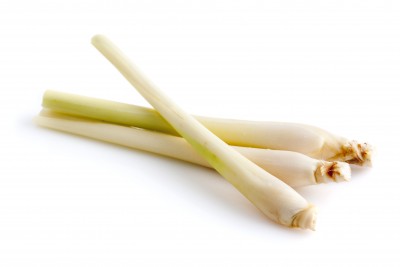Lemongrass

Common Names: Lemongrass, Lemon grass, Citronella grass, Citronella, Cymbopogon citratus, Cymbopogon, Heong Man, Serai, Seréh, Sereh, Sere, West Indian Lemon Grass, Oil grass
Latin Name: Cymbopogon citratus
Origin: Africa, Asia, Australia, South America, North America
Short Introduction
Lemongrass can be cultivated in regions with suitable climate, though growing it in the Czech Republic may face some limitations. In temperate climates, lemongrass should be grown as a container plant that can be moved indoors for overwintering, as it is not tolerant to cold spells. Ideally, cultivate it in sandy, moist soil with frequent watering and ensure it receives plenty of direct sunlight. Regular fertilization using natural fertilizers is recommended, especially since the plant is intended for culinary or medicinal use. For overwintering, a bright space at room temperature is preferred, but cooler places with reduced watering are also acceptable.
Detailed Description
Lemongrass is a tropical perennial valued for its unique citrus aroma and a wide array of uses, ranging from culinary flavoring to natural remedies for conditions like malaria, fever, anxiety, and pain.
Botanical Information
Lemongrass is a robust perennial plant growing in dense clumps composed of long, slender, gray-green leaves that may reach lengths of up to 150 cm. It rarely produces seeds, so propagation is mainly vegetative. All parts of the plant emit a rich, characteristic lemon fragrance. Essential oil glands are distributed throughout the leaf blade, sheath, and bracts, storing a therapeutic oil that contains a variety of active compounds responsible for its health properties.
Origin and Distribution
Lemongrass originates from Southeast Asia, but its cultivation has spread widely to other regions with similar tropical or subtropical climates. Nowadays, it is commercially grown throughout coastal areas of Asia, and agricultural production also takes place in suitable regions of the Americas, Africa, and Australia.
Usage / Dosage
Lemongrass is widely used in the production of cosmetic products for its fragrance, and is a prized ingredient in perfumery, bath salts, and essential oils for massage blends. Dried lemongrass leaves make a refreshing, lemon-flavored tea. In the culinary world—most notably in Chinese and Southeast Asian cuisine—the bulbous bases are sliced finely to flavor dishes, while the more fibrous stems are used as a spice, often in combination with garlic, chili, and coriander. Both fresh and dried/frozen lemongrass can be used without loss of its distinctive aroma.
Lemongrass is also found in incense sticks for its effective insect-repellent properties (comparable to basil). Research points to numerous health benefits, including supporting overall wellness. Notably, some studies suggest that longer-term use of lemongrass compounds may be linked to reduced peripheral cholesterol levels.
Emerging studies examine its potential role in malaria treatment, especially when combined with existing therapies. Traditionally, lemongrass extract or fresh leaves are used in folk medicine to manage fever (including symptoms related to malaria), alleviate anxiety and mild depression, and to stimulate alertness and concentration. In Brazilian folk medicine, it is recommended for anxiety, sleep disturbances, and epilepsy.
Lemongrass is also used in traditional medicine to calm upset stomach and improve digestion. In Indian medicine, it acts as a carminative for bloating. Compounds in lemongrass are thought to stimulate liver cell regeneration and provide similar benefits to the bladder and kidneys. It is believed to boost excretory system function and support plasma filtration.
Clinical research has confirmed the cytoprotective (cell-protecting) effect of lemongrass compounds. Israeli scientists have explored its apoptosis-inducing (programmed tumor cell death) properties, making it an adjunctive candidate for cancer therapy, especially since it targets abnormal cells while sparing healthy ones.
Lemongrass is traditionally used as an analgesic, for fever reduction, and for its mild antibacterial and antifungal effects. Research is ongoing into its anti-inflammatory properties. In animal models, lemongrass was shown to significantly lower blood pressure via direct vasodilation (relaxation of blood vessel muscles), reducing vascular resistance.
Small clinical studies have reported that lemongrass accelerates resolution of oral inflammations in immunocompromised patients (such as those with HIV). It also helps with sore throat, nasopharyngeal inflammation, fever, and reducing the spread of infectious diseases. Lemongrass oil is not recommended for topical use in children or pregnant women due to possible irritation in those with sensitive skin (most people tolerate concentrations up to 3%).
Lemongrass essential oil is highly valued in natural medicine as an analgesic, antimicrobial, antiseptic, astringent, diuretic, tonic, antidepressant, and antipyretic. It has also proven effective for motion sickness, headache relief due to stress or tension, and is used topically to clear oily or acne-prone skin and to relax muscles and tendons in athletes (found in many bath and massage oil preparations). Lemongrass juice can help reduce underarm perspiration, hence its presence in some cosmetic deodorants.
Active Compounds
The most prominent active compounds are found in the essential oil, which is distilled from fresh or partially dried plants. Key components include citral, limonene, linalool, and geraniol, while myrcene contributes antibacterial and digestive calming effects. Flavonoids add significant antioxidant activity. These combined make Cymbopogon citratus a highly valued medicinal plant.
Traditional Dosage
Use according to taste: as a culinary herb for meals, as a refreshing tea, or to flavor various beverages. Can be consumed several times daily as desired.
